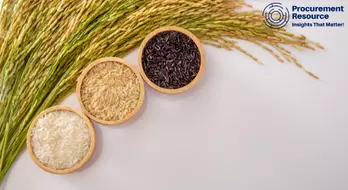India Scrapes MEP for Rice; Expects Export Volume Surge
.webp)
India's recent decision to remove the floor price for basmati rice exports is anticipated to trigger a surge in orders from key markets, including the Middle East, Europe, and the Americas. The change comes as the country aims to expand its share in the global rice market. Earlier this month, the world's largest rice exporter eliminated the minimum price of $950 per metric ton for basmati rice, just ahead of the new crop season.
The removal of the minimum export price (MEP) is expected to make Indian basmati rice more competitively priced on the global stage, potentially boosting export volumes. The MEP had previously limited the export of certain basmati rice varieties, but with its removal, international buyers now have access to a wider range of options. This adjustment is likely to help India reclaim market share that had shifted to Pakistan during the period of price restrictions, as both countries are the primary producers of premium-grade basmati rice.
Read More About Rice Production Cost Reports - Request Free Sample Copy in PDF
Despite the earlier MEP, India's basmati rice exports between April and July increased by 20% from the previous year, reaching 1.9 million metric tons. Last fiscal year, the country set a record by exporting 5.2 million tons of rice, with significant purchases from Canada, Iraq, Oman, Saudi Arabia, and the United Kingdom, compensating for reduced demand from Iran.
With basmati rice not being widely consumed domestically and not included in government reserves, India is focusing on bolstering its export potential. Favorable monsoon conditions are also expected to boost production by 10-12% this year, further supporting India's efforts to expand its presence in the global market.



